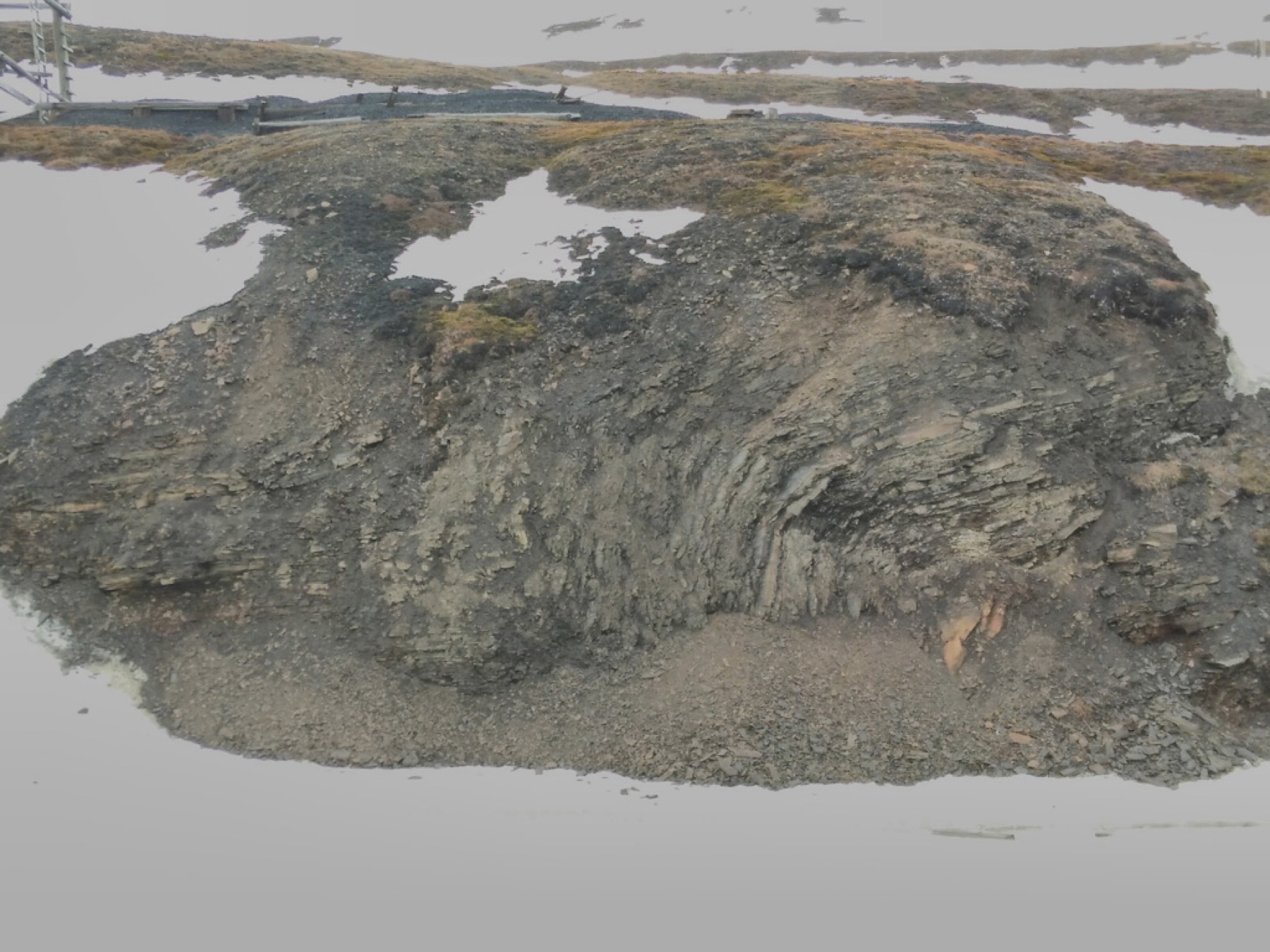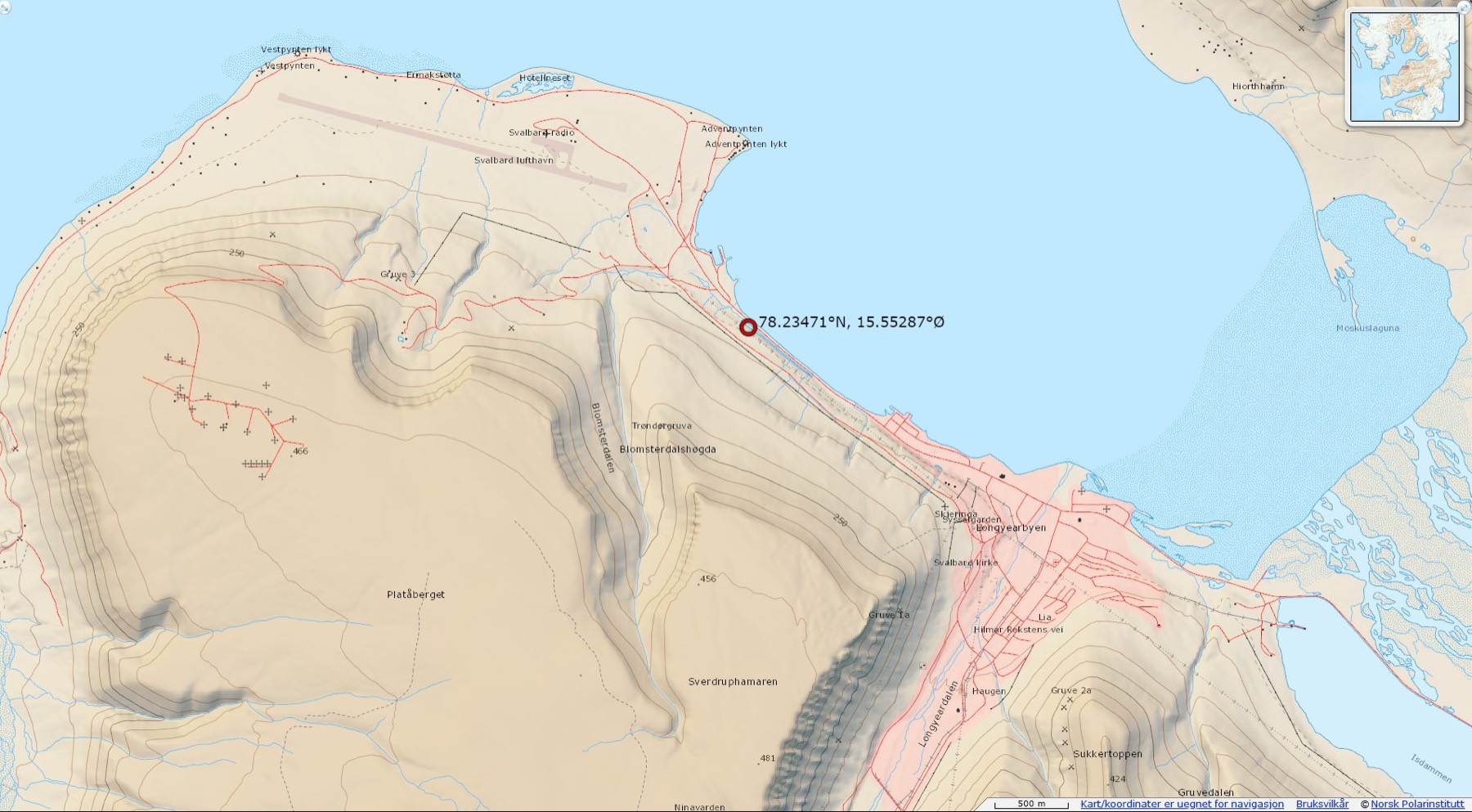Walk along the cliffs just above the road. Pay attention to the different rock types you encounter: layered mudrock, silt- and sandstone from the Cretaceous Carolinefjellet Formation. These sediments were deposited on the sea floor around 115 million years ago. You can find beautiful sedimentary structures and trace fossils. Here, these rocks are folded. They were folded when Svalbard and Greenland collided! In the Early Tertiary, when the Longyearbyen coal was deposited, Svalbard was still attached to Northeast Greenland. Due to simultaneous opening of Baffin Bay and the North Atlantic, Greenland was pushed northeastwards against Svalbard like a bulldozer. This collision produced a 300-kilometer long, folded and thrust-faulted mountain range along the west coast of Spitsbergen, the so-called West Spitsbergen Fold-and-Thrust Belt. It resembles the deformable zones of cars after a crash – but is much, much larger! On both sides of the entrance to Isfjorden, sediments more than three kilometers thick have been turned into a vertical position; the folded rock units are easily recognizable in the mountains. Here, beside the airport road, such folding can be seen in the Cretaceous rocks.
The Longyearbyen Field Guide
We are a group of scientists and Svalbardians who want to share our knowledge about the vicinity of Longyearbyen with you. This app is non-commercial and meant for locals, guides, tourists and everyone interested in science.
It is initially based on the book “The Geology of Longyearbyen” and supported by the Svalbard environmental protection fund, The University Centre in Svalbard, Store Norske Spitsbergen Kulkompani and HDpublish.
We appreciate all of the voluntary contributions and support from all authors and initiators for making this app possible.



